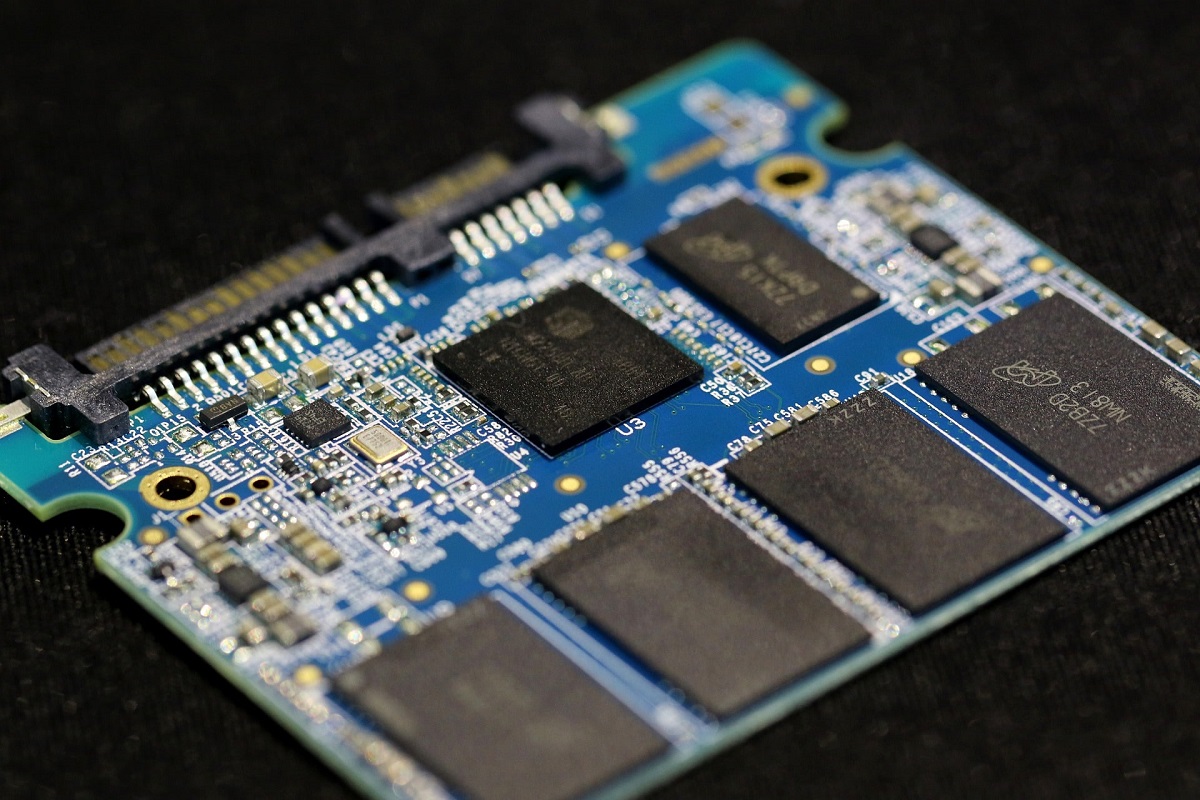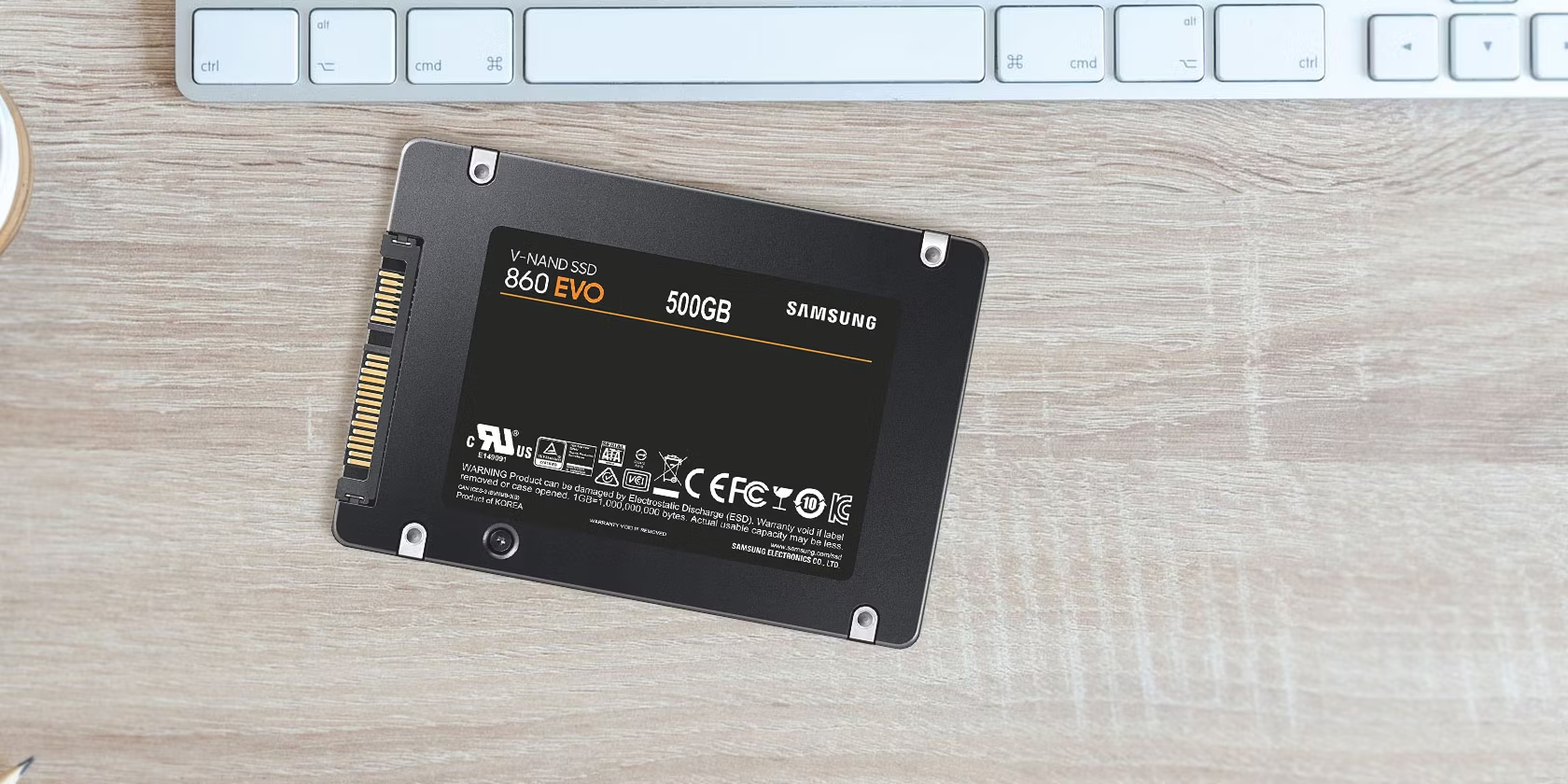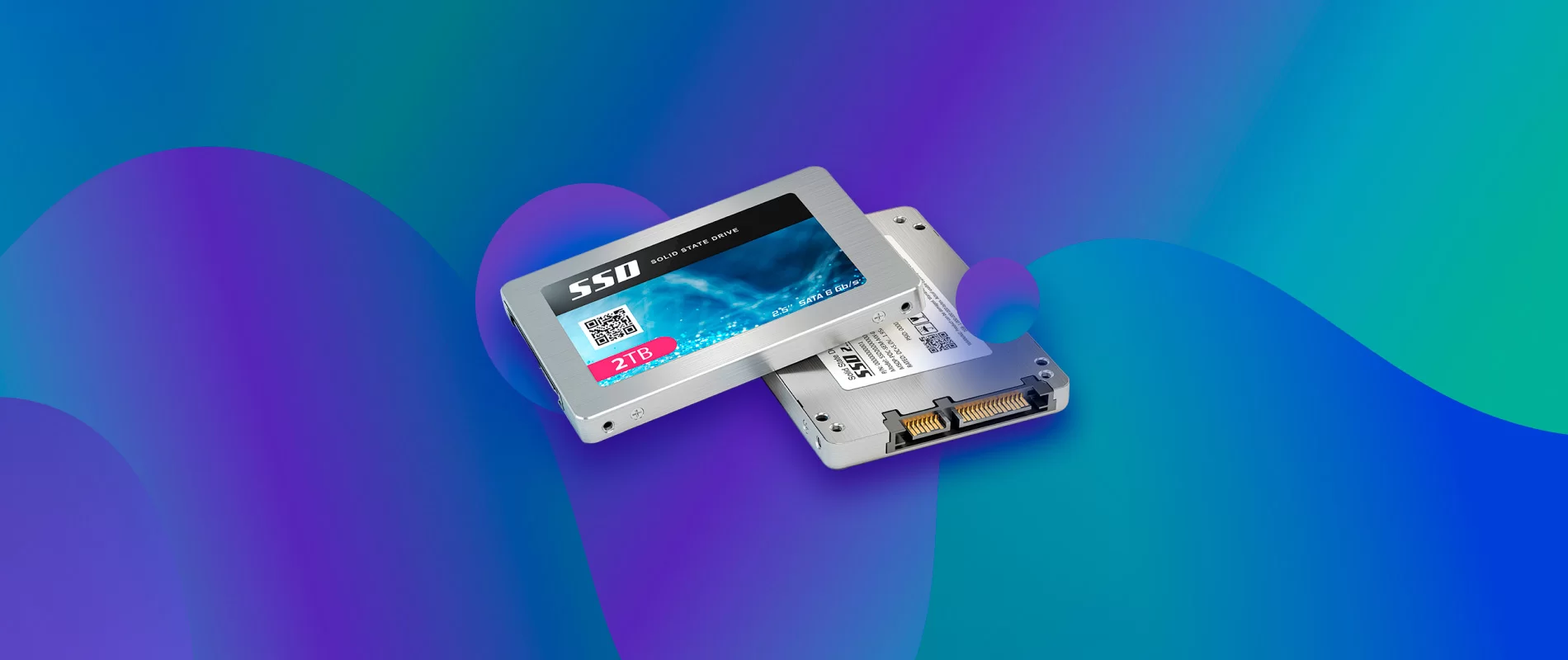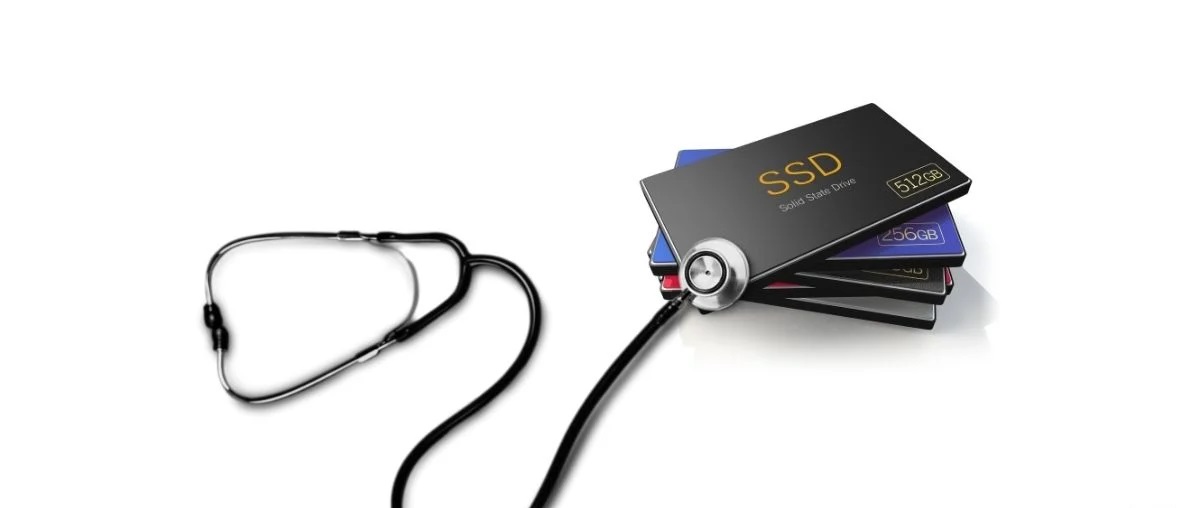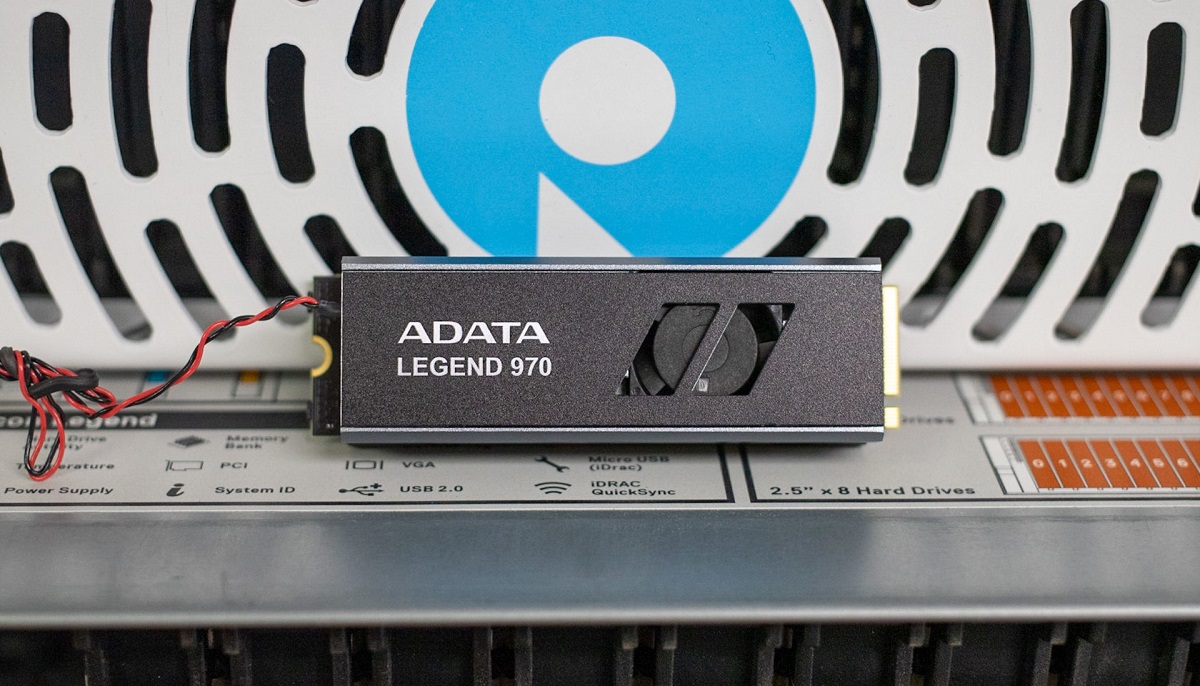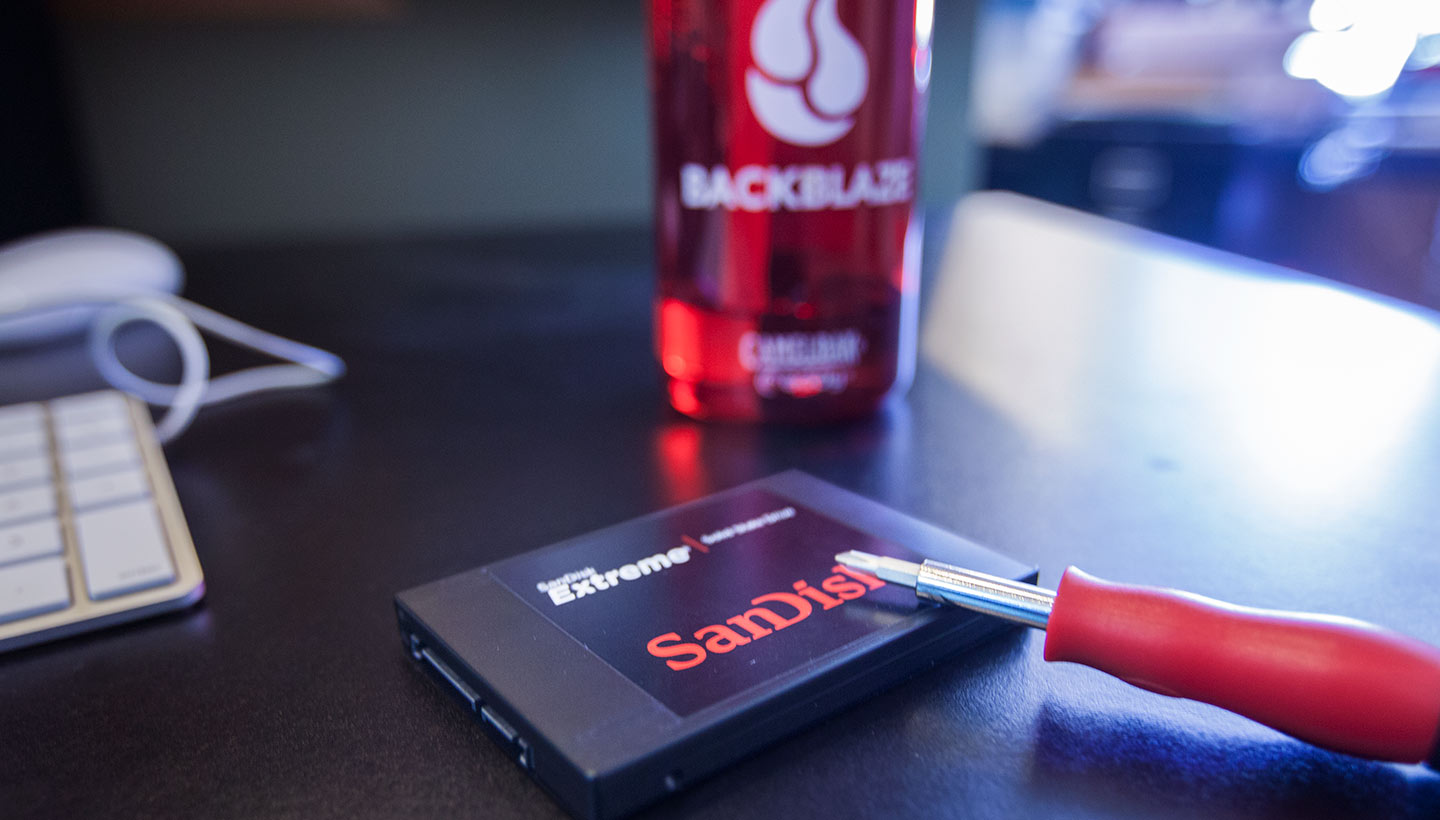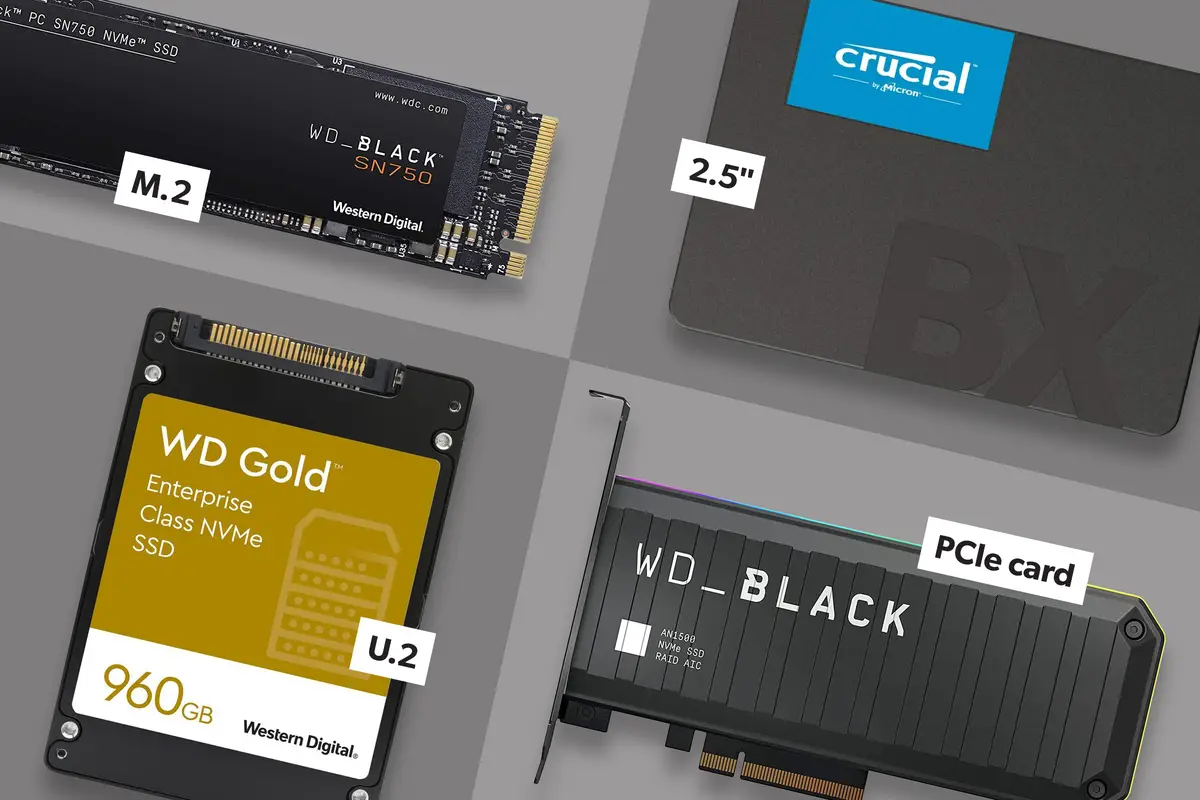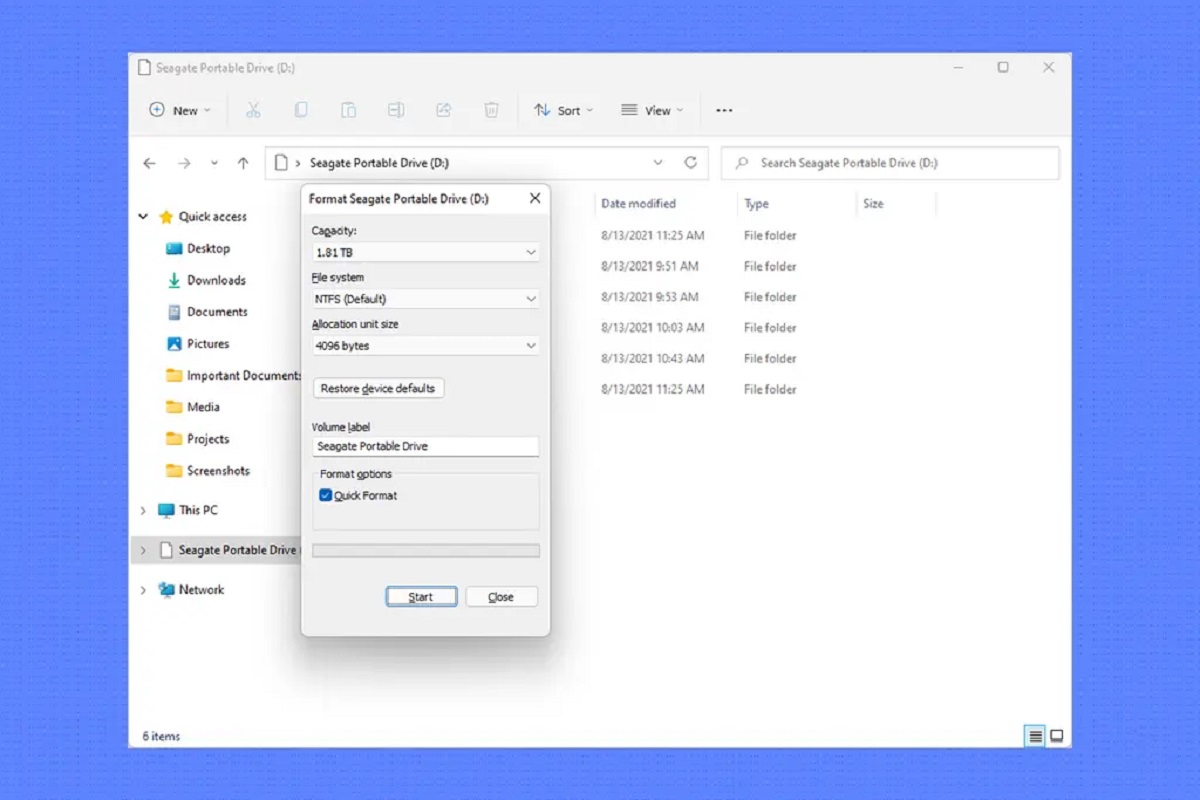Signs of Solid State Drive (SSD) Failure
A solid state drive (SSD) is a crucial component of any computer system, responsible for storing and retrieving data quickly and efficiently. However, like all hardware, SSDs can experience failures over time. Knowing the signs of SSD failure is essential in preventing data loss and taking timely measures to safeguard your valuable information. In this section, we will explore common signs that indicate your SSD may be failing.
1. Slow and Sluggish Performance: One of the initial signs of SSD failure is a significant decrease in overall system performance. You may notice slower boot-up times, longer loading times for applications, and delays when accessing files. These performance issues can be attributed to bad sectors or a failing controller chip within the SSD.
2. Frequent Blue Screen of Death (BSOD) Errors: If your computer frequently crashes with a blue screen and displays error messages, it could indicate potential problems with your SSD. BSOD errors such as “UNMOUNTABLE_BOOT_VOLUME” or “INACCESSIBLE_BOOT_DEVICE” are often associated with SSD failure. These errors occur when the SSD is unable to read or write data properly.
3. Corrupted or Missing Files: Another telltale sign of SSD failure is the appearance of corrupted or missing files. If you notice that certain files or folders have become inaccessible, or if you encounter errors when trying to open them, it may suggest that your SSD is experiencing issues with data storage or retrieval.
4. Clicking or Grinding Noises: Unusual noises coming from your computer, such as clicking or grinding sounds, can indicate a failing SSD. These noises usually occur when the internal components of the SSD are compromised or damaged. If you hear such sounds, it is crucial to backup your data immediately and seek professional assistance.
5. Sudden System Freezes or Crashes: If your computer frequently freezes or crashes, especially during high-demand tasks like gaming or video editing, it might be a sign of SSD failure. Freezes or crashes occur when the SSD fails to read or write data properly, leading to system instability.
6. SMART Errors: The SMART (Self-Monitoring, Analysis, and Reporting Technology) feature in SSDs can provide valuable insights into the health of your drive. If your computer displays SMART errors during boot-up or through diagnostic software, it indicates potential issues with your SSD. These error messages may include warnings about bad sectors, imminent failure, or decreased performance.
Recognizing the signs of SSD failure is crucial to prevent unexpected data loss and system downtime. If you experience any of the symptoms mentioned above, it is recommended to back up your data immediately and consult a professional technician for further assistance.
Causes of SSD Failure
A solid state drive (SSD) is considered a reliable storage solution due to its lack of moving parts. However, just like any technology, SSDs can still experience failures. Understanding the common causes of SSD failure can help you take preventive measures and ensure the longevity of your SSD. Let’s explore some of the most common causes of SSD failure.
1. NAND Flash Wear: SSDs use NAND flash memory cells to store data. Over time, these cells can wear out due to extensive read and write operations. Each cell has a limited number of write cycles, known as program/erase (P/E) cycles. Once this limit is reached, the cell can become unreliable and may fail to retain or retrieve data correctly.
2. Manufacturing Defects: Despite rigorous quality control procedures, manufacturing defects can occur in the production of SSDs. These defects can lead to early failures or cause intermittent issues that worsen over time. Common defects include faulty controller chips, poor soldering, or inadequate heat dissipation mechanisms.
3. Power Outages or Surges: Power-related issues can have a detrimental effect on the health of your SSD. Power outages or sudden surges can cause data corruption or physical damage to the drive. Inadequate power supply or fluctuating voltage levels can also put stress on the components, leading to premature failure.
4. Firmware Issues: The firmware of an SSD is responsible for managing its operations, including data transfer, wear leveling, and error correction. Outdated or buggy firmware can result in compatibility issues, decreased performance, and even complete drive failure. It’s essential to keep your SSD firmware up to date to mitigate potential issues.
5. Overheating: Excessive heat can damage the internal components of an SSD. When an SSD overheats, it may experience data corruption, decreased performance, or even physical damage. Poor ventilation, inadequate cooling systems, or placing the SSD near heat sources can contribute to overheating issues.
6. Physical Damage: Accidental drops, impacts, or exposure to water or extreme temperatures can physically damage an SSD, leading to failures. Even minor physical damage, such as loose connections or bent pins, can prevent the SSD from functioning properly.
7. User Errors: Human errors can also contribute to SSD failures. Improper installation, improper removal while the drive is in use, or using the SSD with incompatible hardware or software can all lead to issues with the drive’s performance or cause it to fail altogether.
Understanding the underlying causes of SSD failure can help you take appropriate steps to prevent or mitigate potential issues. Regularly backing up your data, keeping your SSD cool, and ensuring a stable power supply are just a few precautions that can significantly extend the lifespan of your SSD.
Common Symptoms of SSD Failure
Recognizing the symptoms of solid state drive (SSD) failure is essential in order to take prompt action and prevent the risk of data loss. SSDs, like any other hardware, can experience issues over time or due to various factors. In this section, we will explore the common symptoms that indicate SSD failure.
1. Slow and Inconsistent Performance: One of the primary indicators of an SSD failure is a noticeable decrease in system performance. Tasks that would typically be executed quickly may become slow and inconsistent. This can include longer boot times, delays in opening applications or files, and sluggish overall system responsiveness.
2. Frequent Error Messages: If you frequently encounter error messages when accessing files or running applications, it could be a sign of SSD failure. These error messages may include “Disk read error occurred,” “File or directory is corrupted and unreadable,” or “Drive not detected.” Such errors indicate that the SSD is unable to properly read or write data.
3. Disappearing or Inaccessible Files: Another common symptom of SSD failure is the sudden disappearance or inaccessibility of files or folders. You may find that certain files or directories are no longer visible or accessible, despite being present before. This can indicate issues with the SSD’s ability to store or retrieve data correctly.
4. Random System Crashes: An SSD in the early stages of failure can cause frequent system crashes, with the computer abruptly shutting down or restarting without warning. These crashes can occur during various activities or even during idle periods, indicating that the SSD is struggling to maintain stability.
5. Increasing Number of Bad Sectors: Bad sectors are areas of an SSD that cannot reliably store data. If you notice an increasing number of bad sectors, either through error messages or disk diagnostics, it could be an early sign of SSD failure. Bad sectors can cause data corruption or loss, leading to system instability.
6. Unusual Sounds: Unusual noises coming from your SSD, such as clicking, grinding, or buzzing sounds, should not be ignored. These sounds can indicate physical damage or malfunctioning components within the SSD. If you hear any unusual sounds, it is crucial to back up your data immediately and seek professional assistance.
7. SMART Warnings: SSDs have built-in Self-Monitoring, Analysis, and Reporting Technology (SMART) that can detect potential issues with the drive. If your computer displays SMART warnings during boot-up or through diagnostic software, it is a clear indication that your SSD is experiencing problems. SMART warnings may include alerts about bad sectors, abnormal temperature, or imminent failure.
It’s important to note that experiencing one or more of these symptoms does not guarantee SSD failure, as they can also be caused by other factors. However, if you notice a combination of these symptoms persisting or worsening over time, it is recommended to act swiftly. Backing up your data regularly and seeking professional assistance can help mitigate the risk of data loss and ensure the health of your SSD.
Diagnostic Tools for SSD Failure
When experiencing issues with your solid-state drive (SSD), diagnosing the problem accurately is crucial for determining if it’s a simple software glitch or a serious hardware failure. Fortunately, there are several diagnostic tools available that can help identify and diagnose SSD failures. In this section, we will explore some of the commonly used diagnostic tools for SSD failure.
1. CrystalDiskInfo: CrystalDiskInfo is a popular and user-friendly diagnostic tool that provides detailed information about the health of your SSD. It displays various parameters such as temperature, power-on hours, wear leveling count, and reallocated sector count. CrystalDiskInfo also indicates the overall health status of the drive, giving you valuable insights into potential issues.
2. SSD Toolbox: Many SSD manufacturers provide their own diagnostic tools, such as Samsung’s SSD Toolbox or Intel’s SSD Toolbox. These tools offer features like firmware updates, health checks, and performance optimization utilities specific to their SSD models. They can provide detailed information about the drive’s health, including wear leveling, temperature, and remaining lifespan.
3. HD Tune: HD Tune is a comprehensive hard disk diagnostic tool that also supports SSDs. It offers features like S.M.A.R.T. monitoring, benchmarking, error scanning, and secure erasing. HD Tune allows you to check for bad sectors, analyze the drive’s performance, and detect any issues that may arise from it.
4. SSD Life: SSD Life is a utility designed specifically for monitoring the health of solid-state drives. It provides detailed SMART information, estimates the remaining lifespan of the drive, and provides alerts for any potential issues. SSD Life also displays real-time drive statistics such as wear leveling and drive health rating.
5. Manufacturer-Specific Tools: SSD manufacturers often provide their own software tools for diagnosing and managing their SSDs. For example, Western Digital has the WD SSD Dashboard, which offers health monitoring and optimization features. Similarly, Crucial offers the Crucial Storage Executive tool for diagnosing and managing their SSDs. These manufacturer-specific tools can provide more accurate diagnostics and specific optimization options tailored to the respective SSD models.
6. Operating System Utilities: Operating systems like Windows and macOS come with built-in diagnostic utilities that can help diagnose SSD issues. Windows has a built-in Disk Management tool that allows you to check for disk errors, view partitions, and check the health status of the SSD. macOS includes the Disk Utility tool, which provides similar diagnostics and repair capabilities for SSDs and other storage devices.
Using diagnostic tools can provide valuable insights into the health and potential issues of your SSD. It is recommended to run these tools periodically to monitor the SSD’s condition and address any potential failures or performance issues promptly.
Steps to Take When Your SSD is Failing
When you suspect that your solid-state drive (SSD) is failing, taking immediate action is essential to prevent further data loss and minimize the impact on your computer system. Follow these steps to effectively address the situation when your SSD is failing:
1. Backup Your Data: Prioritize backing up your important files and data stored on the failing SSD as soon as possible. Use an external storage device or cloud-based backup services to create a secure copy of your data. This step ensures that you have a backup in case the SSD completely fails or requires professional intervention.
2. Run Diagnostic Tools: Utilize diagnostic tools, such as CrystalDiskInfo, HD Tune, or the manufacturer-specific tools, to assess the health of your SSD and identify any specific issues. These tools can provide insights into the status of the drive, potential errors, and overall performance, helping you make informed decisions for troubleshooting.
3. Check for Firmware Updates: Visit the manufacturer’s website or use their specific software utility to check for any available firmware updates for your SSD. Updating the firmware can fix bugs, improve compatibility, and enhance the overall performance of the drive. Follow the instructions provided by the manufacturer to safely and correctly update your SSD’s firmware.
4. Investigate Software Issues: Sometimes, SSD-related problems can be caused by software conflicts or compatibility issues. Check if any recently installed software or driver updates are affecting the performance of your SSD. Consider rolling back or uninstalling such software to see if it resolves the problem. Additionally, ensure that your operating system is up to date, as updates often include bug fixes and improvements for SSD compatibility.
5. Check Connections: If your SSD is internal, double-check the connections between the drive and the motherboard. Loose or faulty connections can cause intermittent issues or prevent the system from detecting the SSD altogether. Ensure that the cables are securely connected and inspect the connectors for any physical damage. In case of persistent issues, consider seeking professional assistance to diagnose and resolve hardware-related problems.
6. Consider Professional Assistance: If your SSD failure persists despite your attempts to resolve it, it may be time to consult a professional technician or contact the SSD manufacturer’s support. They can provide specific guidance, offer repair services, or initiate an RMA process if the drive is still under warranty.
7. Replace the SSD: If all else fails and the SSD continues to exhibit signs of failure, you may need to replace it. Acquire a new SSD that meets your storage needs and supports your computer’s interface (such as SATA or NVMe). Install the new SSD and restore your data from the previously created backup.
8. Learn from the Experience: Use the experience of SSD failure as an opportunity to reassess your data backup strategy, regularly update firmware, and ensure proper maintenance of your SSD. Learning from the situation can help prevent future failures and mitigate the risk of significant data loss.
Remember that each SSD failure scenario may vary, and the appropriate steps to take can depend on the specific circumstances. If you’re unsure or uncomfortable with troubleshooting the issue yourself, seek professional assistance to address the SSD failure properly.
How to Prevent SSD Failure
Preventing solid-state drive (SSD) failure is essential to ensure the longevity and optimal performance of your storage device. While SSDs are generally reliable, taking proactive measures can minimize the risk of failure and potential data loss. Here are some effective strategies to prevent SSD failure:
1. Maintain Adequate Operating Temperatures: SSDs can be sensitive to heat. Ensure proper ventilation and cooling within your computer case to prevent the SSD from overheating. Avoid placing the SSD near heat sources or in cramped spaces that restrict airflow. Monitoring and controlling system temperatures can significantly improve the lifespan of your SSD.
2. Avoid Frequent Power Fluctuations: Power fluctuations and sudden power outages can cause data corruption and physical damage to SSDs. Invest in a quality uninterruptible power supply (UPS) to protect your computer system from power-related issues. The UPS will provide a stable power supply to your SSD and other critical components, reducing the risk of unexpected failures.
3. Keep Firmware Updated: Regularly check for firmware updates provided by the SSD manufacturer. Firmware updates often include bug fixes, performance enhancements, and increased compatibility with new hardware and software. Keeping your SSD’s firmware up to date can improve stability and help prevent potential issues or failure in the future.
4. Enable TRIM: TRIM is a feature that allows your operating system to communicate with the SSD and optimize its performance. It helps maintain consistent write speeds and extends the lifespan of the SSD. Ensure that TRIM is enabled on your operating system to benefit from this crucial SSD maintenance feature.
5. Avoid Excessive Write Operations: While SSDs are designed to handle extensive read and write operations, minimizing unnecessary write operations can help prolong their lifespan. Optimize your system settings to reduce write-intensive activities such as excessive temporary file creation or constant downloading and deleting of large files.
6. Perform Regular Data Backups: Regularly backing up your important data is crucial, regardless of the type of storage device you use. This practice not only protects your data from SSD failure but also safeguards against accidental deletion, file corruption, or other unforeseen events. Use external drives, cloud-based storage, or both to create redundant backup copies.
7. Properly Shut Down Your System: Always follow proper shutdown procedures when turning off your computer. Avoid using the “Force Shutdown” option or abruptly cutting off power to the system, as this can cause data corruption and potentially harm your SSD. Allow the operating system to complete its shutdown process before powering off the computer.
8. Handle SSDs with Care: SSDs, like any other electronic device, are susceptible to physical damage from drops, impact, or exposure to extreme temperatures or liquids. Handle your SSD with care, and avoid subjecting it to unnecessary stress or potential hazards. This includes properly securing the SSD in your computer case and avoiding rough handling during installation or removal.
By following these preventive measures, you can significantly reduce the chances of SSD failure and ensure the long-term reliability of your storage device. Regular maintenance, firmware updates, and responsible usage practices are all key to maximizing the lifespan and performance of your SSD.
Conclusion
Understanding the signs, causes, and preventive measures to take in the event of solid-state drive (SSD) failure is essential for computer users. SSDs play a crucial role in data storage and retrieval, and their failure can result in significant data loss and system downtime. By being aware of the warning signs of SSD failure, such as slow performance, error messages, or disappearing files, users can take timely action to prevent further damage and safeguard their valuable data.
Several factors can contribute to SSD failure, including NAND flash wear, manufacturing defects, power issues, firmware problems, overheating, physical damage, and user errors. Being knowledgeable about these causes enables users to take appropriate preventive measures to extend the life of their SSDs. Regular backups of important data, routine firmware updates, and maintaining optimal operating temperatures are some effective strategies to prevent SSD failure.
Additionally, utilizing diagnostic tools helps to accurately diagnose and troubleshoot SSD issues. Tools like CrystalDiskInfo, HD Tune, and manufacturer-specific utilities provide valuable insights into the health and performance of the SSD, aiding in making informed decisions for repair or replacement.
In the event of SSD failure, taking immediate action is crucial. This includes backing up data, running diagnostic tools, checking for firmware updates, investigating software issues, verifying connections, and seeking professional assistance if necessary. By following these steps, users can minimize the risk of data loss and reduce downtime.
Ultimately, adopting preventive measures and promptly addressing SSD failure not only safeguards data but also minimizes the inconvenience and costs associated with potential hardware replacements. Keeping SSDs in optimal condition and staying proactive in their maintenance ensures the best performance and longevity, allowing users to fully utilize the benefits of this reliable storage solution.







